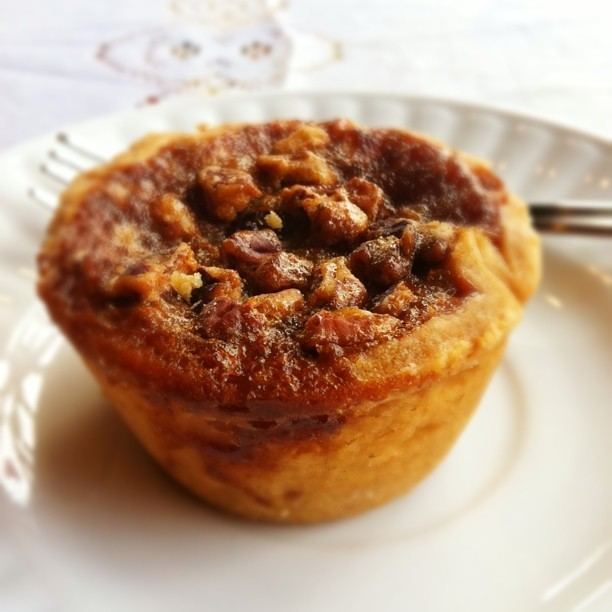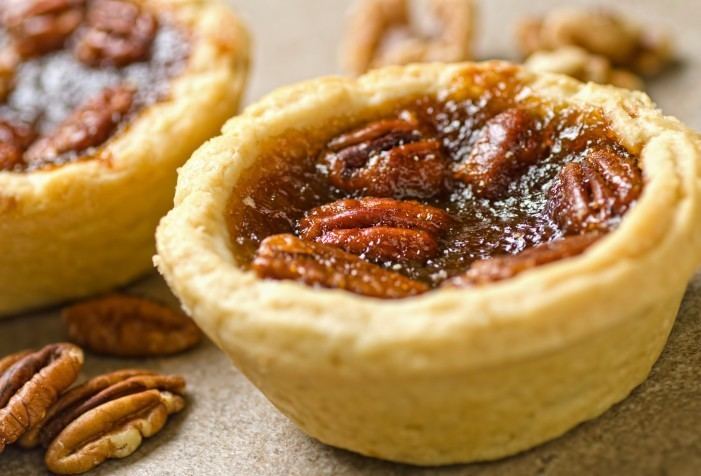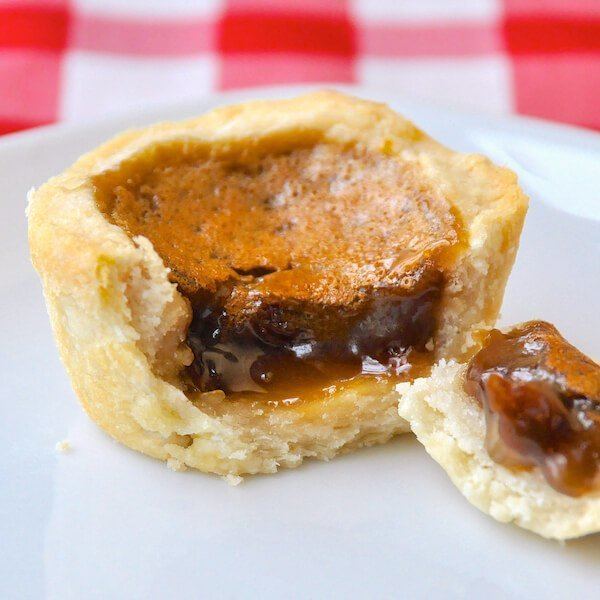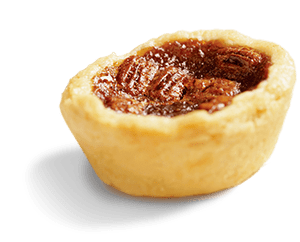Type Pastry | Food energy(per serving) 580 kcal (2428 kJ) | |
 | ||
Similar Nanaimo bar, Chocolate tart, Shortbread, Pecan pie, Tourtière | ||
Butter tarts recipe demonstration joyofbaking com
A butter tart is a type of small pastry tart highly regarded in Canadian cuisine and considered one of Canada's quintessential desserts. The tart consists of butter, sugar, syrup, and egg filled into a flaky pastry and baked until the filling is semi-solid with a crunchy top. The butter tart should not be confused with butter pie (a savoury pie from the Preston area of Lancashire, England) or with bread and butter pudding.
Contents
- Butter tarts recipe demonstration joyofbaking com
- How to make a canadian butter tart legourmettv recipe
- History
- Cultural identity
- References

Recipes for the butter tart vary according to the families baking them. Because of this, the appearance and physical characteristics of the butter tart – the firmness of its pastry, or the consistency of its filling – also vary.

Traditionally, the English Canadian tart consists of butter, sugar, and eggs in a pastry shell, similar to the French-Canadian sugar pie, or the base of the U.S. pecan pie without the nut topping. The butter tart is different from pecan pie in that it has a "runnier" filling due to the omission of corn starch. Often raisins, walnuts or pecans are added to the traditional butter tart. However purists contend that such additions should not be allowed.

More exotic flavours are also produced by some bakers. Examples such as maple bacon, pumpkin, chili and salted caramel cardamom flavours have been made for competitions.

How to make a canadian butter tart legourmettv recipe
History
Butter tarts were common in pioneer Canadian cooking, and they remain a characteristic pastry of Canada, considered one of only a few recipes of genuinely Canadian origin. It is primarily eaten and associated with the English-speaking provinces of Canada.
Some suggested pastries with similar origins to the butter tart include:
The earliest published Canadian recipe is from Barrie, Ontario dating back to 1900 and can be found in The Women's Auxiliary of the Royal Victoria Hospital Cookbook. Another early publication of a butter tart recipe was found in a 1915 pie cookbook. The food was an integral part of early Canadian cuisine and often viewed as a source of pride.
Similar tarts are made in Scotland, where they are often referred to as Ecclefechan butter tarts from the town of Ecclefechan. In France, they are related to the much more common tarte à la frangipane, that differs from the basic Canadian recipe only by the addition of ground almonds.
Cultural identity
Butter tarts are an integral part of Eastern Canadian cuisine and are objects of cultural pride of many communities across Ontario and indeed Canada. This cultural and community connection with the tart has spawned butter tart themed tourism such as the Butter Tart festival at Muskoka Lakes, Ontario, the trademarked "Butter Tart Trail" at Wellington North, Ontario, and the "Butter Tart Tour" in Kawarthas Northumberland, Ontario. The two competing associations have since resolved their dispute through the mutual agreement to modify "The Butter Tart Tour" to "Kawarthas Northumberland Butter Tart Tour". The first Kawarthas Northumberland Butter Tart Tour Taste-Off was launched at the Flavour Festival in Peterborough on Sunday, April 28, 2013, where four bakeries were crowned winners by a panel of celebrity judges.
Ontario's Best Butter Tart Festival and Contest is an annual event held in Midland, Ontario. The contest portion of the festival attracts bakers from across Ontario, and is Canada's largest butter tart themed celebration, with over 50,000 tarts sold in the festival market in 2014.
Even National Geographic recognizes the significance of the butter tart in an article on Georgian Bay, Ontario. In October 2013, referring to a stand in Wasaga Beach, they stated that "It's the homemade Canadian butter tarts – flaky crust with gooey pecan filling – that set this place apart from other lakeside ice cream stands."
